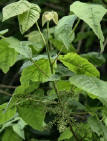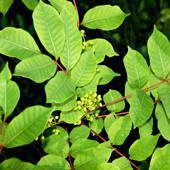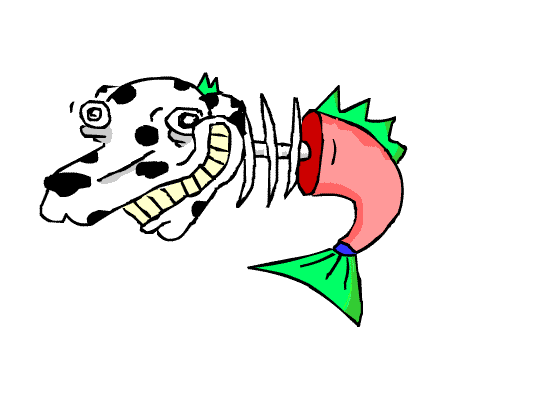Have you ever suffered from exposure to Poison Ivy or Poison Oak or Poison Sumac? Many people have and they are sure to try and avoid contact with these plants. I used to think I was immune to Poison Ivy. I lived in the foothills in California and "The Poison" was everywhere, and I never got it. Then one year I was visiting Ocean City, Maryland and I got a horrible case of Poison Ivy with large crusty scabs an incredible urge to scratch and I ended up going to the doctor and getting cortizone shots to get some relief. I got some relief. Now I am very susceptible to the Western Poison Oak and I am very careful when in the outdoors.
What causes the problem?
Urushiol is an oily organic allergen found in all parts of the plants of the family Anacardiaceae, especially Toxicodendron spp. (e.g., poison oak, poison ivy, poison sumac). It causes an allergic skin rash on contact, known as urushiol-induced contact dermatitis. When it contacts the skin it binds together within ten to twenty minutes. The Human body has an alergic reaction in about 3/4 of the population, which causes the rash, usually that same day, but may take longer to appear.
Where does Poison Ivy Grow? 
Poison Ivy grows throughout much of North America, including the Canadian Maritime provinces, Quebec, Ontario, Manitoba, and all U.S. states east of the Rockies, as well as in the mountainous areas of Mexico up to around 4,900 ft, and is normally found in wooded areas, especially along edge areas. In addition to that, it grows in exposed rocky areas and in open fields and disturbed areas. It also grows as a forest understory plant, although it is only somewhat shade tolerant. The plant is extremely common in suburban and exurban areas of New England, the Mid-Atlantic, and southeastern United States. The plants have "Leaves of Three, Let it be", three almond-shaped leaflets which turn from various shades of green to bright red in the fall. They grow as a trailing vines that are 4 to 10 inches tall ,as a shrub up to 4 feet tall and as climbing vines which grow on trees or some other support. I always look for plants with the distinctive 3 leaves when I'm walking outdoors. If an area is heavily forested, watch where you step.
Western Poison Oak:  on the left.
on the left.
Western poison-oak occurs only on the Pacific Coast of North America, where it is common, and ranges from southern Canada to the Baja California peninsula. It is one of California's most prevalent woody shrubs, but also climbs, vine-like, up the sides of trees, and can be found growing as single stems in grassland--often as part of early stage succession where woodland has been removed, and serving as a nurse plant for other species.
The plant often occurs in California oak woodlands and Douglas-fir (Pseudotsuga) forests. The vine form climbs far up the trunks of coast redwoods, potentially killing smaller trees.
It is found in damp, semishady areas near running water, but thrives in direct sunlight and only requires water in early spring. Any trail leading to a waterfall on California's coast may likely be home to western poison-oak; it can also be found in some inland mountain ranges, such as the Cascades.
Atlantic Poison Oak:
Atlantic Poison-oak (syn. Rhus pubescens), is an upright shrub that can grow to 3 ft tall. The leaves are 6 in. long, alternate, with three leaflets on each. The leaflets are usually hairy, and are variable in size and shape, but most often resembling white oak leaves; they usually turn yellow or orange in autumn. The fruit is small, round, and yellowish or greenish.
This species is native to the Southeastern United States westward to Texas and Oklahoma. It can be found on the Maryland, Deleware and Virginia also. Atlantic Poison-oak can be found growing in forests, thickets, and dry, sandy fields.
Poison Sumac: 
Poison sumac grows exclusively in very wet or flooded soils, usually in swamps and peat bogs, in the eastern United States as far west as Idaho and Canada. Poison sumac has compound leaves with 7-13 leaflets, and the veins from which the leaflets grow are always red. The plant grows as a shrub and produces fruit that is a small white or grey berry.
What does a poison oak or poison ivy rash look like?
The rash starts with itchiness and swelling, followed by a reddish inflammation of tiny pimples. Blisters form and couple in a chain-like reaction, and a clear fluid oozes from the blisters. This fluid then hardens to a yellowish crust. Left untreated, the rash (a typical histamine response) will last three to five weeks.
What can I do to relieve the itching from poison oak or poison ivy?
There is no cure for the poison oak or poison ivy rash once it begins, only relief of the symptoms.
Avoid further contact with the plant oil if possible. Clean your tools, clothing and pets that have been exposed to the poison oak, ivy or sumac to avoid recontamination from the urushiol oil.
Minor itching, pain, oozing and swelling caused by poison oak and poison ivy can be relieved with over-the-counter anti-itch treatments (ask your Pharmacist. For severe reactions, a prednisone prescription is necessary to stop skin damage, especially if the eyes are involved. A physician also can prescribe antihistamine creams, tablets or shots.
Do the blisters cause the rash to spread?
No, the blisters are the body's natural allergic reaction to poison ivy, oak and sumac plants. If the blisters break and ooze, the fluid does not contain the oil that causes spreading.
Oil from the original contact with poison oak and poison ivy will continue spreading (unless removed) for the first one or two days. If new areas of rash appear after three days, you are most likely getting re-exposed to the plant oil from contaminated clothing, tools or even your cat or dog. If you are a hunter, you should realize that all of the animals you are hoping to come in contact with most likely have the Urushiol oil all over them. Don't ask me how I know.
How long will a poison oak or poison ivy rash last?
Mild cases of poison oak or poison ivy can last five to 12 days. More severe cases can last 30 days or longer.
Should I break the blisters from poison ivy, oak or sumac rash?
Never break the blisters! An open blister can easily become infected and lead to blood poisoning. If the blisters break, cover loosely with a sterile bandage. In severe cases, contact your doctor.
Are dead poison oak or poison ivy plants safe to touch?
No, the poison oil remains toxic and does not evaporate. All parts of living or dead poison ivy, oak and sumac plants, including the roots, contain the urushiol oil. Be especially careful of dead poison oak and poison ivy vines on firewood and leafless vines in the winter.
Is it possible to get a rash by breathing the smoke of burning poison oak or poison ivy plants?
Yes. Urushiol can be carried in the smoke from burning leaves or brush. If you think you have inhaled the oils, see your physician immediately; this can be a very serious condition. Avoid breathing the smoke.
